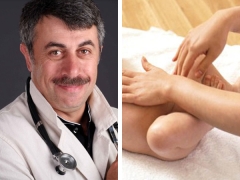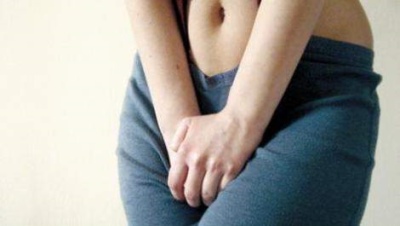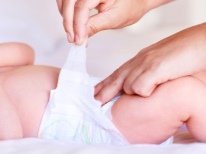Dr. Komarovsky about synechia in girls
For a long time it was believed that such an intimate problem of girls as synechia is caused solely by improper or insufficient hygiene. Today, with the implementation of hygienic procedures, there are no problems even among residents of remote villages and villages, and splicing of the labia mater is still diagnosed from time to time. What should parents do if they find synechiae at their daughter, says famous pediatrician Yevgeny Komarovsky.
What it is
In girls, synechia is a cosmetic defect in an intimate place, in which there is adhesion of the labia in a certain fragment, more often in the lower third, or along the entire length. Not only the labia, but also the large, in some cases, the small lips can be joined with the large. Sometimes it turns out that only the vagina is closed, and sometimes, with full adhesion, it is not possible to see even the urethral openings.
In the process of accretion, the child does not experience any pain, itching or other unpleasant sensations, and therefore even attentive parents are quite difficult to understand when this process began. Usually, the diagnosis is faced with an accomplished fact, when a pediatric gynecologist begins talking about synechia after examining a child. As a rule, this occurs when applying for a kindergarten or school.
According to Yevgeny Komarovsky, 1-3% of all girls have such a problem. This is only official data that exists mainly on paper. In practice, according to the doctor, the percentage of such babies in a single clinic may be close to 35-40%. This is due to the way a particular doctor treats the signs of synechia: if you try hard, then fusion can be found to some degree in almost every baby under two years of age.
Thus, Dr. Komarovsky says, girls' synechiae should not be considered a disease. Rather, it is a physiological feature of early childhood, and there is nothing wrong with this diagnosis. This does not apply to cases where the fusion is so extensive that the outflow of urine is disturbed and obstructed. This can result in severe gynecological inflammatory processes. In general, I am sure Komarovsky, synechiae in early childhood do not have any influence on the future reproductive function.
The reasons
The causes of the appearance of synechia in modern medicine are not yet completely clear, although many specialized reference books point to a certain connection between the inflammatory process in the external reproductive organs and the subsequent fusion of the labia. So, the trigger for splicing can be bacterial inflammation, an allergic reaction.
Some gynecologists note that synechiae are more often formed in babies who are caring for their parents several times a day with soap. With such hygienic procedures, the tender skin of the labia is injured, and these micro injuries, while healing, lead to fusion.
According to the doctors, the synthetic clothing worn by the girl can also lead to formations of synechias. An important role is also played by the washing powder of the mother washing the baby’s underwear - if there are aggressive substances in it, synechiae can be a consequence of chronic inflammation, which the daughter’s genitals have been subjected to for a long time due to chemical irritation.
One of the most compelling reasons for synechia today is considered to be the low level of the female sex hormone estrogen in girls in their first years of life, and this is the norm.Newborn babies rarely suffer from fusion of the labia, because they have an adequate supply of maternal sex hormones, but by half a year the risks of synechiae grow.
Symptoms
The only, but quite obvious symptom of synechia is a thin translucent film that connects the fused labia. Any doctor and almost all parents can see it, if they look closely. No analyzes and additional studies are needed for diagnosis.
If added to the splice vulvitis or vulvovaginitis, redness will surely be noticeable, discharge with an unpleasant odor may appear, the girl will begin to complain of itching in the genital area.
Treatment
If a child doesn’t complain about anything, if he isn’t worried about pain, itching, there are no problems with urination, one shouldn’t particularly think about the treatment, says Yevgeny Komarovsky. The degree of fusion is necessary from time to time to monitor, visiting a gynecologist. There is no need to "rush" into operations, because by the beginning of puberty, after 7 years, the girl will start to produce female sex hormones (estrogens), and under their influence the labia will become more elastic, and the fusion problem will be solved by itself. This outcome happens in about 80% of girls.
The rest of the adolescents will be prescribed medication - an ointment containing estrogen (“Ovestin”), which will need to be rubbed into the labia for several weeks. Gradually, the healing cream is replaced with any neutral, not containing perfume additives and dyes. It is used after bathing.
The standard treatment regimen looks like this:
- the first 2 weeks "Ovestin" rubbed twice a day;
- the next 2 weeks ointment rubbed once a day, for the second treatment using regular baby cream;
- in the future, “Ovestin” is canceled, leaving only children's cream or another neutral cream, provided that the synechiae are divided.
To rub the drug should be strictly certain way: only a finger, not cotton or chopsticks, and only on the area of fusion, avoiding contact with the adjacent areas. Apply the ointment to a little pressure, but at the same time to ensure that the child does not hurt. Pressure is no less important than Ovestin itself.
Such actions when using ointments and creams with estrogen are usually not observed, only a small number of small patients may experience a slight swelling of the labia. With further use, it disappears.
Such synechiae that are accompanied by problems with urination, unhealthy vaginal discharge, and pain should be promptly treated. Parents should remember well that even in such situations no one forces them to immediately lead the child to the surgeon. First, therapy with the use of special estrogen-containing ointments is necessary, and only if it turns out to be ineffective, will the child be shown a mechanical separation of the fused labia.
Yevgeny Komarovsky urges mothers not to agree on the manual separation of synechiae by hand - that’s how children’s gynecologists often offer to do so. If your doctor is one of them, it’s better to find another doctor who knows that it’s better to use tools instead of fingers for separation in the 21st century, and that the girl must first anesthetize her labia.
After the procedure is properly carried out, Dr. Komarovsky recommends that you necessarily take a course of applying ointment with estrogen to avoid re-fusion. According to medical statistics, the probability of recurrence after surgery for the separation of the labia is about 30%.
Recommendations
To avoid re-unification, or to prevent primary synechiae, the girl’s parents should remember that:
- wash the baby need under running water from front to back, not vice versa;
- baby soap should be used no more than once a daywhile it is important to ensure that it does not fall on the mucous membranes of the labia and vagina;
- baby clothes and bedding should be washed exclusively with baby powder, after washing, it is best to arrange additional rinsing with water, which is pre-boiled and thus "saved" from chlorine;
- after carrying out water procedures, as well as swimming in the river, in the sea or in the pool, the girl should be obliged to put on dry clean underwear, panties;
- a baby who has not yet learned to go to the pot, you need to change disposables more often diapers, to ensure that there is no contact with the feces and prolonged contact with the urine;
- panties should be bought exclusively cotton, white, without textile dyes.
Dr. Komarovsky will tell you more about synechia in girls in the next video.























